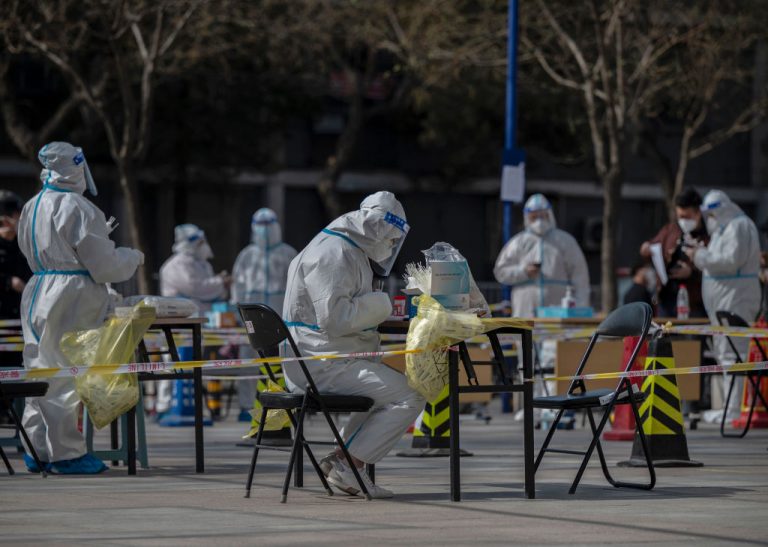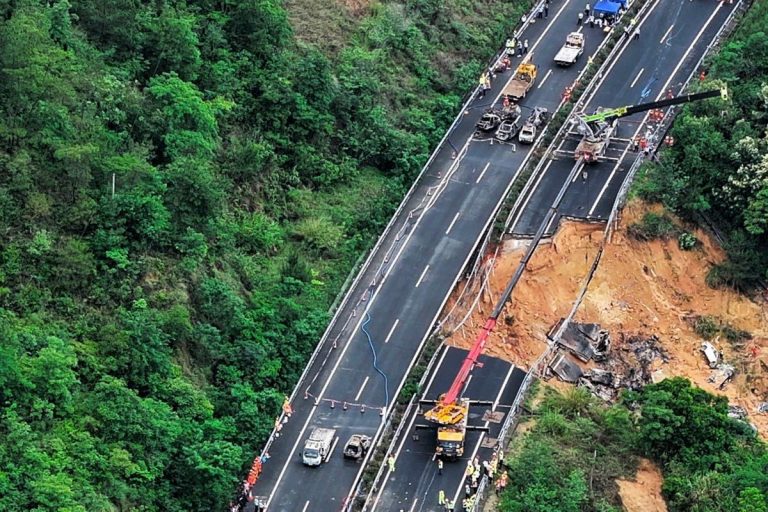China’s battle with COVID-19 shows no signs of stopping as the financial hub of Shanghai continues to report more than 10,000 infections daily.
On April 10, the city home to 26 million residents, reported 26,000 new infections. Despite Shanghai’s unrelenting lockdowns and restrictions, which has seen numerous cases of tragedy and violence occur over the past two weeks, the number of new infections continues to rise at an unprecedented pace.
MORE ON CHINA’S CORONAVIRUS SITUATION:
- Public in Uproar as Shanghai Authorities Separate Children From Parents in ‘Zero-COVID’ Protocols
- Desperate Residents Protest Shanghai Lockdown: ‘You are driving people to their deaths’
- Workers in Hazmat Suits Seen Beating Shanghai Residents to Enforce ‘Zero-COVID’ Regulations
In a desperate attempt to quell the new outbreak, the Chinese regime has deployed tens of thousands of workers and special task forces from other provinces and regions to assist health workers in Shanghai.
A broken system
On April 11, a worker from Jiangsu Province expressed the frustrating experience he underwent while volunteering in Shanghai. In a Twitter post, the worker said they were notified to go assist in nucleic acid testing at 9:00 a.m.
After arriving at the testing facility, he said the site was so disorganized and chaotic that they did not start testing people until 8:30 p.m. that evening. Although they were told the goal was to test 3,000 residents per day, due to the inefficient management and lack of supplies, their site was only able to test 300 residents that day.
Success
You are now signed up for our newsletter
Success
Check your email to complete sign up
“We started the first round of waiting for the shuttle bus from Shanghai to pick us up,” he said. At 6:30 p.m., after waiting for two hours, the bus finally came. After boarding the bus, they waited for another hour again before being driven to the testing site.
When they finally arrived at the testing facility, the worker was told that volunteers there had been waiting for senior staff and supplies to arrive for several hours. By 7:30 p.m., pandemic staff finally got to the location. However, they still couldn’t start testing because no supplies had arrived yet.
Only a third of planned tests conducted
“Another round of waiting started. Meanwhile, some volunteer workers were getting so exhausted that they couldn’t physically stand for any longer,” the Jiangsu worker wrote in his post.
Finally, at 8:30 p.m., he said the testing supplies were dropped off, but the health code system in Shanghai was malfunctioning that day.
In efforts to keep track of every citizen’s health status, everyone in China is required to have a mobile phone reflecting their COVID status.
People with green health codes are allowed to travel freely. Those with yellow or red codes are not allowed to visit public places such as supermarkets, hotels, restaurants etc. The affected individual has to then report all close contacts to health authorities, undergo quarantine and several nucleic acid tests before they can be cleared and given a green status again.
Those who test positive, however, even if they aren’t showing any symptoms or require medical care, are taken away by pandemic staff to government facilitated quarantine sites, and told to remain there until they test negative.
“The testing site was supposed to test 3,000 people per day, but we were only able to test 300 people.” The Jiangsu worker said he had volunteered to go help in Shanghai on three separate occasions, but the same disorganized situation occurred every time.
No end in sight
Shanghai’s citywide lockdown was scheduled to be conducted in two phases. The city’s Pudong financial district and nearby areas were first placed into lockdown from March 28 to April 1. Authorities said the restrictive measures were put in place in order to allow health workers to conduct at least two rounds of mass testing.
In the second phase of the lockdown, the vast downtown area west of the Huangpu River that divides the city started its own five-day lockdown lasting from April 1 to April 5.
On the day the lockdowns were scheduled to be lifted however, residents were told that due to the severity of the pandemic and the rapidly growing number of new infections, the measures would have to be extended until further notice.














